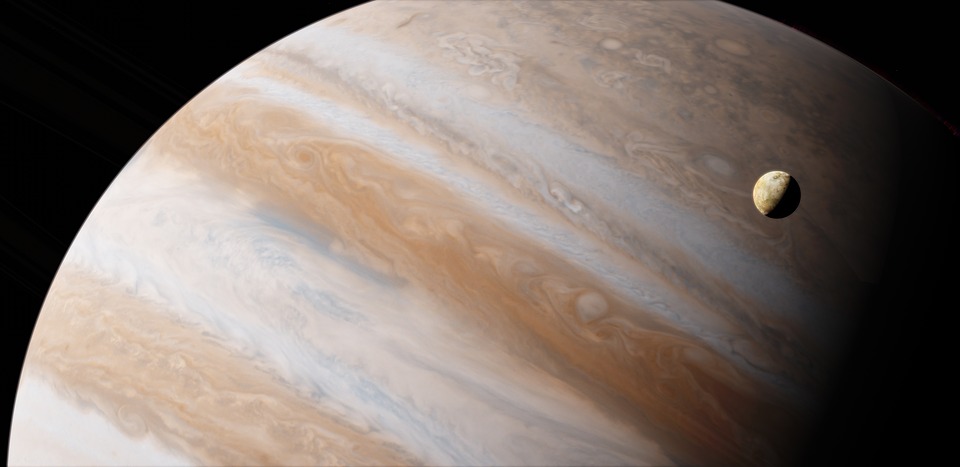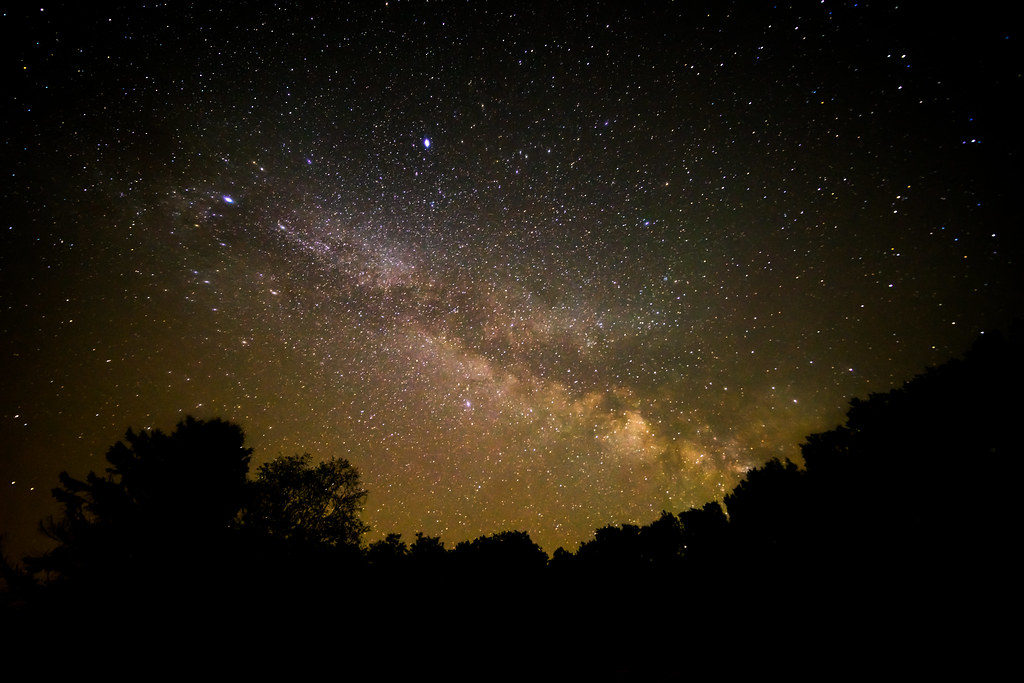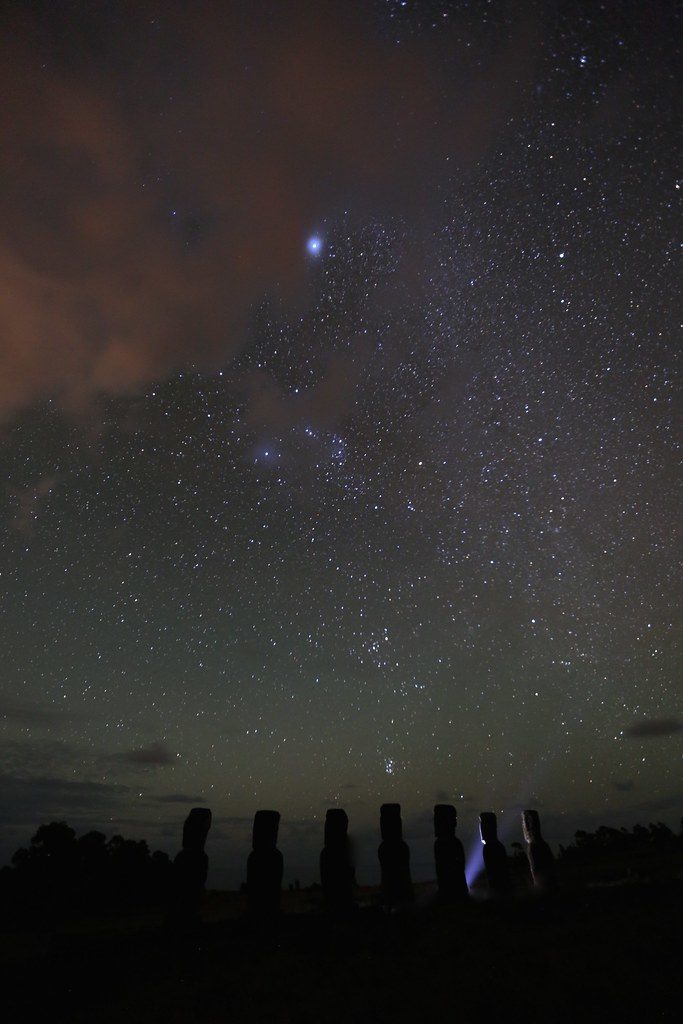
Jupiter remains in the evening sky, well placed for observing. Look low in the southwest at dusk for the brightest thing there.
Saturn is also in the evening sky. Although it is not as bright as Jupiter, you can find it easily at some distance to the left of Jupiter.
Venus and Mars are lost in the Sun’s glare and out of sight this month. In fact, Mars is exactly on the far side of the Sun from us (at conjunction) on September 2.
The Summer Triangle is high overhead at dusk. This consists of Deneb, Vega, and Altair, the brightest stars in Cygnus, Lyra, and Aquila respectively. Scorpius, the Scorpion, is in the southwest, with the ‘teapot’ of Sagittarius to his left. Jupiter shines above Scorpius, with Saturn to the upper left of the ‘teapot’. When you face between these two constellations, you face the direction of the galactic center, which all stars in the Milky Way orbit. From the Big Dipper’s handle, ‘arc to Arcturus’ and ‘speed on to Spica’ in the southwest. The Great Square of Pegasus rises in the east, heralding the coming autumn.

If you are far enough from bright city lights, you might look for the Milky Way band. This band is brightest near the galactic center and extends from there right through the Summer Triangle. In fact, every star we ever see in the sky with the naked eye is in our Milky Way. Indeed, our galaxy is so big that only stars relatively close to us appear as distinct stars; the rest of our galaxy blurs out and appears as the Milky Way band across our sky. For example, Deneb is about 1600 light years away, which ids quite far. The entire Milky Way, however, is 100,000 light years across, making Deneb one of our relative ‘neighbors’. Thus, we see our Milky Way as a blur in the background with stars like Deneb (and Vega, Altair, Arcturus, Spica, etc.) in the foreground.
Moon Phases in September 2019:
- 1st Quarter Sept. 5, 10:10 p.m.
- Full Sept. 13, 11:33 p.m.
- Last Quarter Sept. 21, 9:41 p.m.
- New Sept. 28, 1:26 p.m.
At 2:50 am on Monday, September 23, the Sun is directly overhead at the equator, shifting southwards. Therefore, this marks the autumnal equinox, one of two days a year when everyone on Earth has the same amount of daylight. Many consider this the ‘official’ start of fall, although the actual arrival of fall weather varies from year to year. Keep in mind that air and water take some time to cool off, and it takes even longer for any of that cool air to make it down to Houston. That’s why, even with the Sun lower in the sky, warm or even hot weather is common for us in September. As a result, the fall equinox is much warmer than the spring equinox in March, when the Sun is at a similar height in the sky. For anyone in the South Temperate Zone, this is the spring equinox. Those folks can look forward to watching the leaves return and the flowers bloom during October and November.

Our annual Astronomy Day is on Saturday, October 5! Due to ongoing renovations at the George Observatory, this year’s event will occur at the Insperity Observatory in Humble ISD (2505 S. Houston Ave. in Humble). On Astronomy Day we have activities from 3-10 pm, including fee observing through telescopes. Surf to www.astronomyday.net for more information. Clear Skies!

